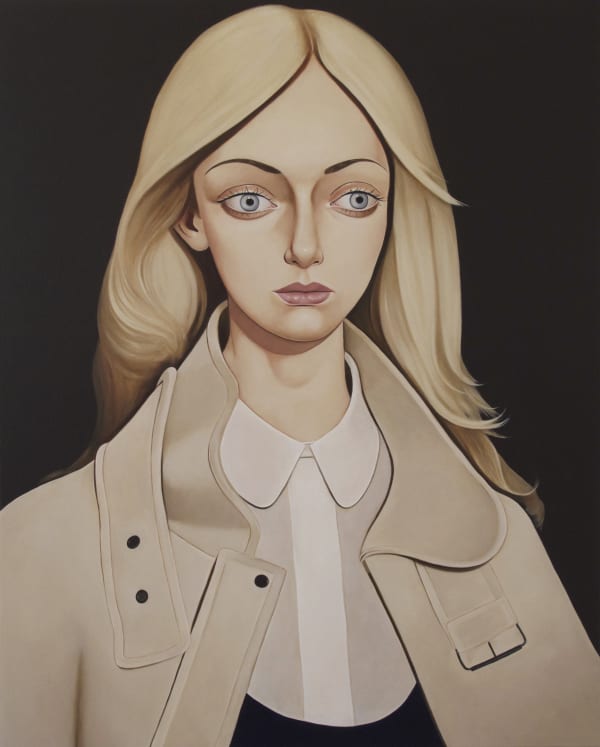Ways of Recording: Chung Chi Yung, Kim Dong Yoo, Peter Stichbury, Cindy Wright, Yoon Suk One
Gallery Baton is pleased to present an exhibition of selected works by five emerging artists, Ways of Recording, from Korea and abroad, from 27 May to 27 June 2015.
Artists Chung Chi Yung (b. 1972, Korea), Kim Dong Yoo (b. 1965, Korea), Peter Stichbury (b. 1969, New Zealand), Cindy Wright (b. 1972, Belgium) and Yoon Suk One (b. 1983, Korea) participate in this exhibition, Ways of Recording, offering spectators an opportunity to reflect on the meaning of painting as a method of recording artists’ contemplation and observation.
In a technical sense, the emergence of photography had a considerable effect on painting’s one of the major function; recording. In terms of visuality, the act of recording sensitively relies on the preciseness of representing reality, so photography is preferred due to its advantage in capturing the physical trace of a subject using machines such as cameras and printers. However, as Susan Sontag (1933-2004) indicated, it liberated painting from the tedious labour of accurate representation and ultimately opened up a path to abstract painting. Especially, the implanting of the artists’ own imagination, subjective analysis and technical skills into painting dramatically increased, as much as artists deviated from an obsession with reproduction. As a result, the final outcome of figurative art can be seen as a personal archive that contains private memories or an individual’s view of specific events and objects.
This corresponds to Craig Owens (1950-1990)’s point of view in which representing something is not neutral, rather it can be the action of authority. When artists’ experiences and their visual responses to the environment turn into paintings stimulating human perception, the audiences find themselves attempting to understand and analyse the visual. In this respect, the consequence of realistic paintings is connected to artists in any shape or form. Unlike photography, the imperfect and atypical elements can reinforce poetic and aesthetic expression, therefore the implied authority of representation can be magnified in realistic paintings.
The photorealism-based work, Chung Chi Yung’s The Age of Quarrel 5 (2015), recreates photographic images that are constantly reproduced and consumed by mass media. He produces results with a pictorial sensitivity by adjusting the gradation of darkness in the works, into a broad of spectrum of intermediate hue. The elaborate effect of evenly applying pastel layers on the original images’ surface evokes a nostalgic atmosphere, reminding us that the topical event is just a past moment.
Kim Dong Yoo constantly maintains his Pop Art approaches. One of his early works, Republic of Korea (1993) is significant as a beginning of his double images and the recent butterfly series. This series is based on the actual stamps that were published, distributed and purchased. The artist borrows this merchandising imagery, which loses its own visual uniqueness since it is casually used in ordinary life. Also, by exaggerating the original stamps’ vivid colours that were designed in order to arouse customers’ interest, he keeps Pop Art’s mode and obtains a wild primitive impression at the same time.
Peter Stichbury’s Emily Trim (2015) pays tribute to a group of children aged between 5 and 12, who witnessed a UFO and its occupants at Ariel Primary School in Ruwa, Zimbabwe in 1994. Emily Trim’s delicate, pale countenance and preoccupied gaze suggest the close encounter has left her removed from any firm sense of a singular reality. Stichbury’s exaggerated realism reinforces a sense of otherworldliness and an internal disorientation, both of which communicate the subject’s ambivalence toward traditional assumptions about the primacy of the human organism in the cosmos.
Cindy Wright’s Broken Bones (2014) accurately depicts a human skull specimen. The combination of Cindy’s superior technique and a sophisticated usage of charcoal achieves an extremely precise expression. It enables the work to escape from distaste or revulsion that could often occur from similar objects. The work embraces intrinsic existential themes, such as presence, death and time by an anatomical description excluding emotions.
It is interesting to read Yun Suk One’s David (2015) as a pictorial transformation of Louise Lawler’s (b. 1947) methodology. His paintings usually borrow the photo images of old sculptures. He pays attention to the way that the marble sculpture’s colour changes to a grey-tone gradation when it turns into photography. Accordingly, Yun Suk One continuously presents monochrome paintings. Sometimes, lines, dots and irregular bumpy surfaces that are deliberately or spontaneously scattered on the canvas play a metaphoric role to show the lapse of the time and the transition of the environment that the sculpture went through.









